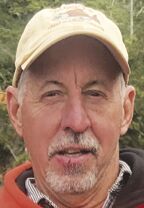The natural world: Saving wild salmon and steelhead
Published 3:00 am Saturday, March 4, 2023

- Dauble
Can wild salmon and steelhead runs be restored?
It is a widely held belief among resource managers and others that within the collection of stressors termed the “4 H’s” (i.e., hydro, habitat, harvest and hatcheries), lies the secret to recovery of salmon and steelhead populations. What’s surprising is the results of a recent survey of scientists suggests that stopping harvest and closing hatcheries would likely not drastically change current wild salmon abundance in the Columbia River Basin. Indeed, there is a good chance such a drastic change in the current management policy would drive wild runs even lower.
Despite the expenditure of billions of dollars directed at their recovery, salmon and steelhead runs have been on a downward trajectory for over 150 years. According to the Northwest Power Planning Council, Columbia Basin wild salmon and steelhead populations are holding at roughly 2% to 4% of pre-1850s levels. Overall numbers of both hatchery and wild fish are less than 20% of historic levels.
To help provide expert scientific input to current policy and management deliberation on salmon recovery, Dr. Robert Lackey, an internationally recognized expert on salmon science and policy, developed a “thought experiment” and asked Columbia River Basin scientists how stopping fishing and closing hatcheries would most likely affect remaining wild runs of salmon and steelhead. What follows is largely a synopsis of his recent blog entry on the topic (https://blogs.oregonstate.edu/lackey/blog/).
The thought experiment involved participation of 58 nationally and internationally known experts who have published widely on salmon issues in the Columbia River Basin and elsewhere. Experts were guaranteed anonymity to increase the probability of them contributing candid responses.
So, what did this stellar group of salmon experts conclude? Firstly, 57% predicted already low wild runs would end up the same or decrease in the absence of hatchery stocking and fishing. About 43% of the responding group of scientists predicted wild runs would eventually increase, but most predictions were for numbers less than the current wild plus hatchery level. Interestingly, 83% predicted that current (wild plus hatchery) salmon abundance (i.e., the overall Columbia Basin run) would decline without hatchery stocking and sans harvest.
It is noteworthy that only 5% of scientists predicted an overall abundance greater than the current total (wild plus hatchery) after salmon harvest was stopped and hatcheries were closed.
The issue of salmon restoration is both complicated and controversial. Presumably, those individuals who made these scientific judgments were the most knowledgeable about the topic. Lackey goes on to state the results of his survey are only predictions based on scientific judgment of respondents or what is commonly known as expert opinion.
Granted, distinction needs to be made among the six species of Pacific salmon and steelhead based on life history requirements and environmental stressors that affect their survival. For example, the amount of time and geographical range with respect to freshwater rearing, ocean residence, migration distance, and spawning habitat varies widely among runs and species.
Columbia Basin harvest is managed by the Tribes and state and federal government agencies through treaty agreements, management councils and regional compacts. A current management priority is to effectively catch hatchery fish while avoiding at-risk wild populations.
That’s a tall order. Approximately 140 million ocean-going juvenile salmon and steelhead are released annually from fish hatcheries in the Columbia River Basin, the majority from the upper part of the watershed. Half or more of returning adults, depending on species, are hatchery-origin. Based on those numbers, closing hatcheries would put a big dent in tribal, commercial, and sport harvest opportunity.
If closing hatcheries and stopping harvest are not key to restoring wild salmon runs, what is? Well-documented causes of salmon and steelhead decline include climatic and ocean conditions, dams, mining, water pollution, habitat alteration, overfishing, irrigation water withdrawals and predation. Another way of saying it is, “All of the above.”
Lackey poses the question, “Are there other factors policy-makers and fisheries managers are forgetting?” Seems there is. He notes: “Anywhere wild salmon were once plentiful (Europe, Asian Far East, Eastern North America), the decline in their abundance is roughly inversely proportional to the area’s growth in the human population. As the human population expanded in these regions, the size of salmon runs declined.”
Further on in the blog, Lackey states: “Since the mid-1800s, the West Coast and Columbia River Basin has played out similarly for wild salmon. Without dramatic changes in economic policies and lifestyles, future options for restoring salmon runs to significant, sustainable levels will be greatly constrained. For example, how does society choose to balance using water to grow food versus using the same water to sustain wild salmon?”
Agriculture is by far the largest user of water. Industry is next, followed by domestic use. Thus, a central theme to salmon recovery is the competing and ever-growing use of water for an ever-growing human population.
No matter how you slice it, hatcheries and harvest are inextricably linked. Without hatcheries, harvest in the Columbia Basin will suffer. To add fuel to the flame, freshwater habitats continue to be compromised by water use activities and energy demands increase as the human population grows. Only time will tell if tradeoffs or compromise occurs among competing user groups and salmon; and, if so, whether salmon populations will favorably respond.





